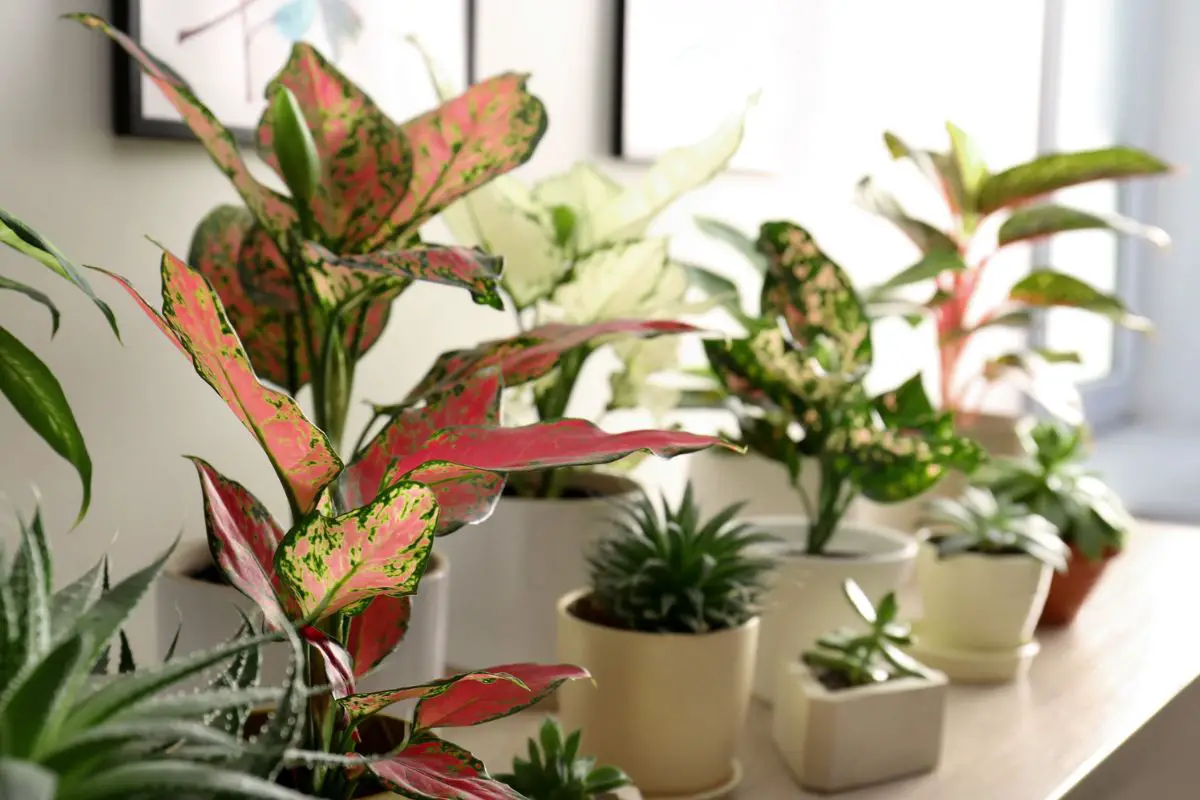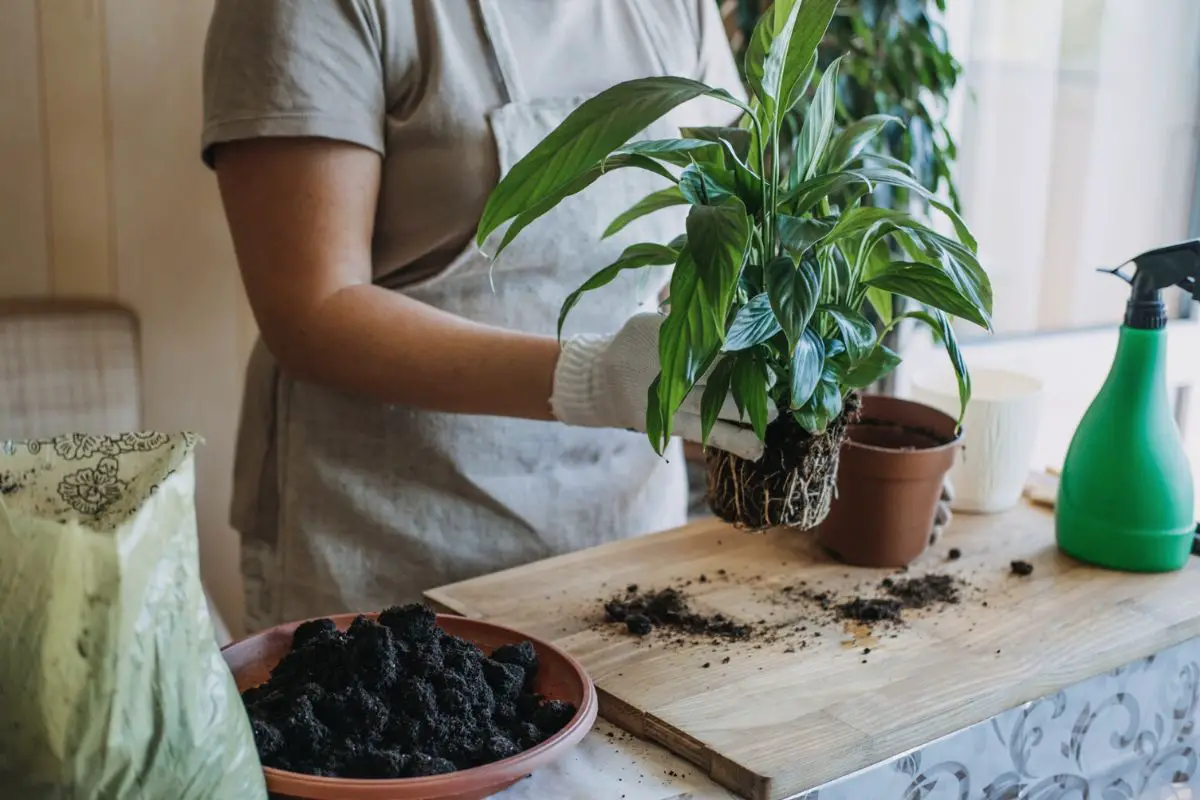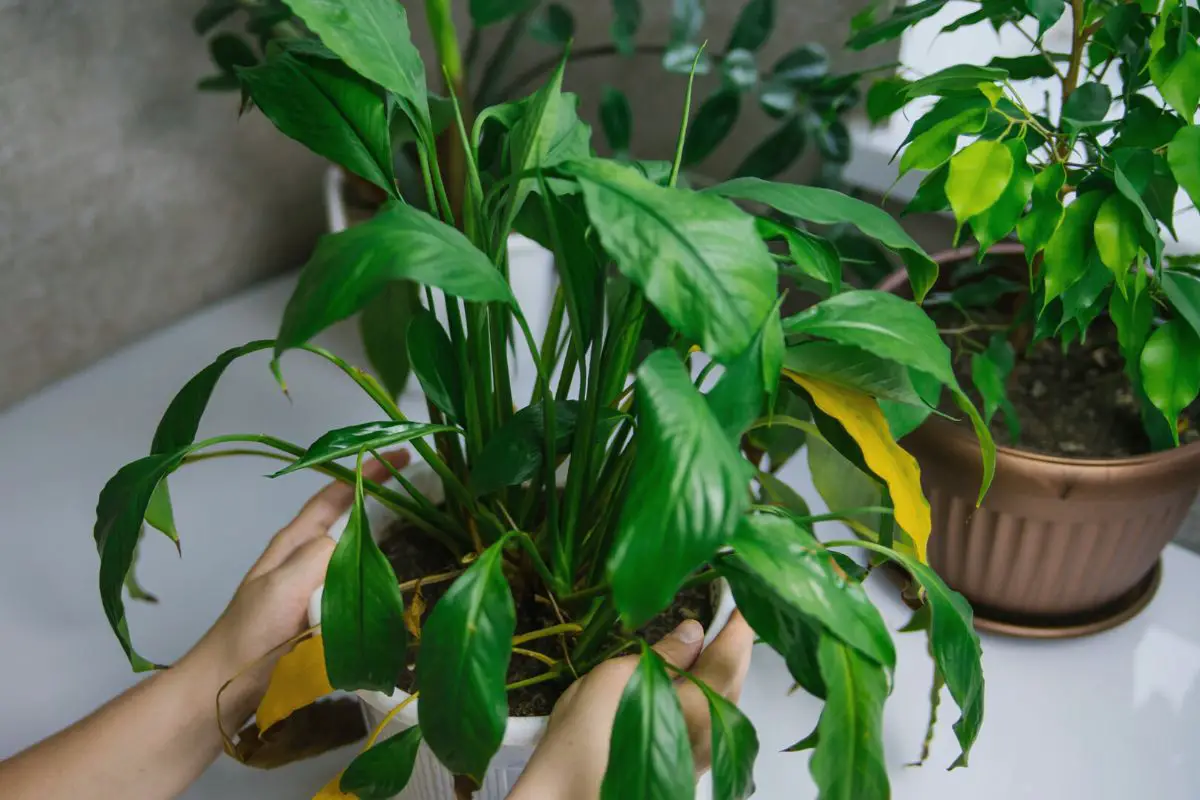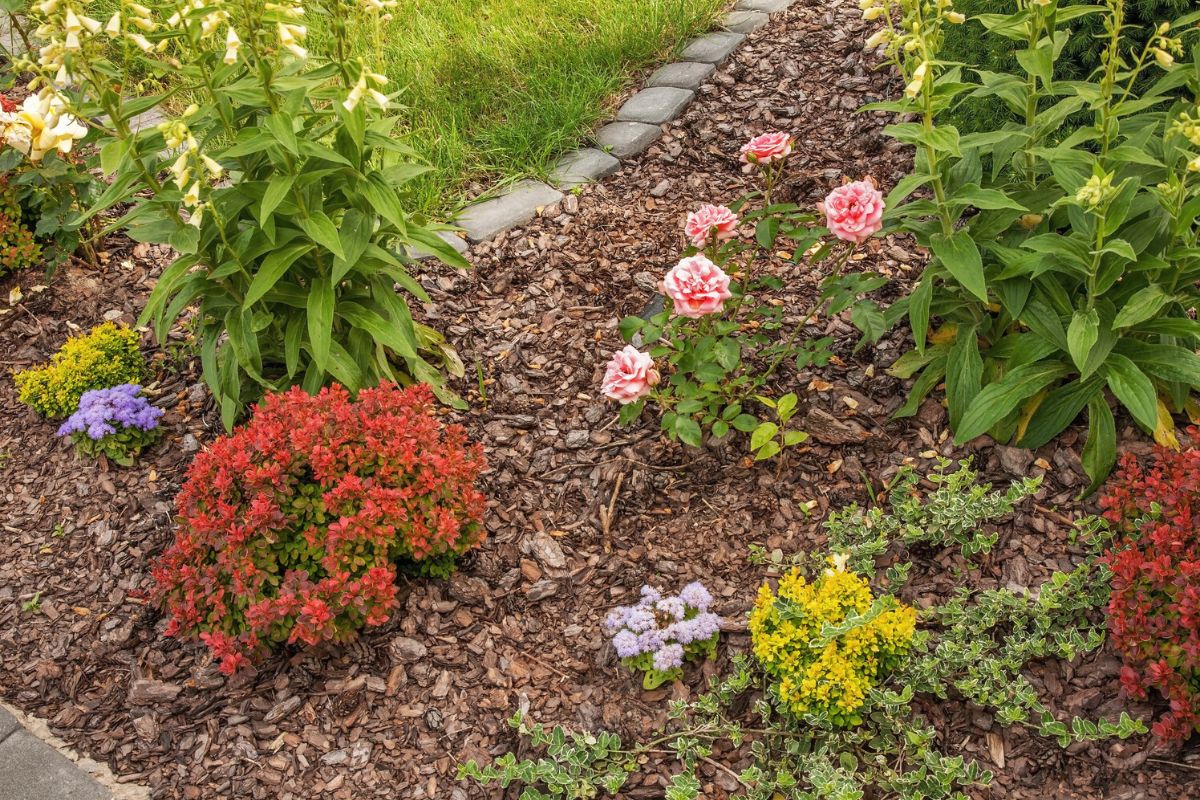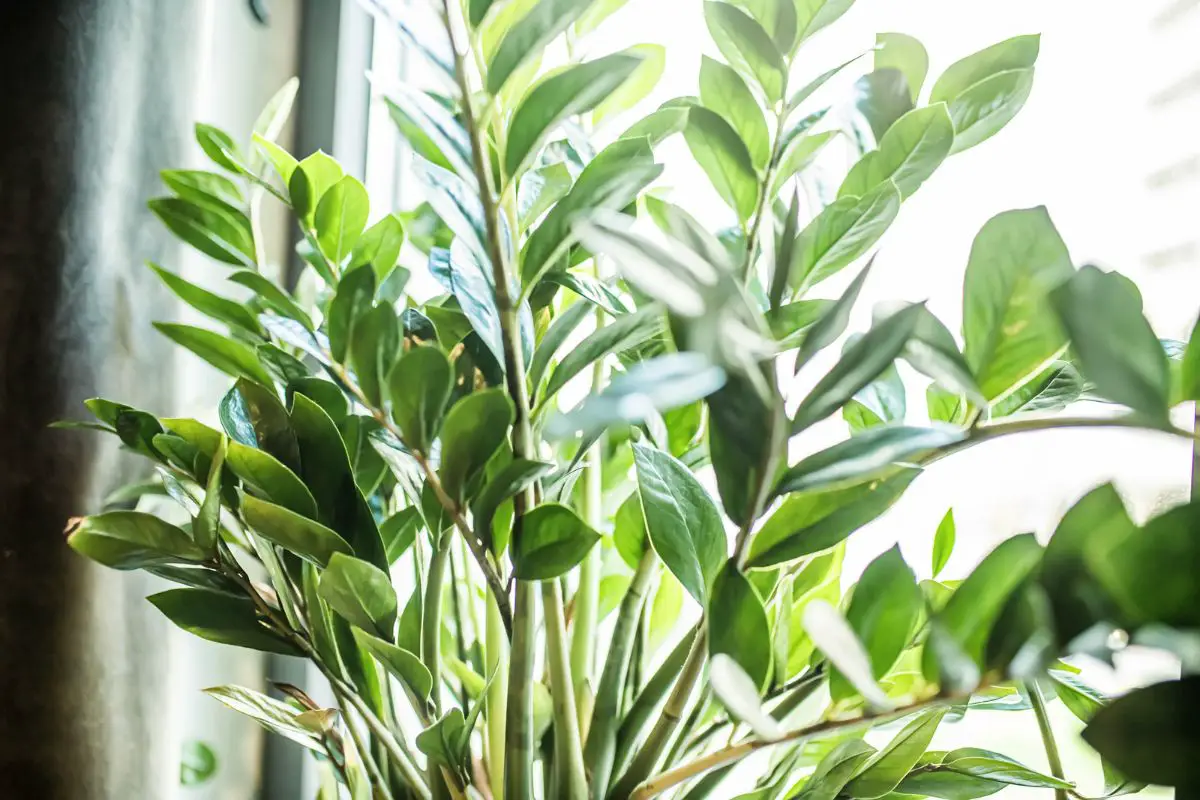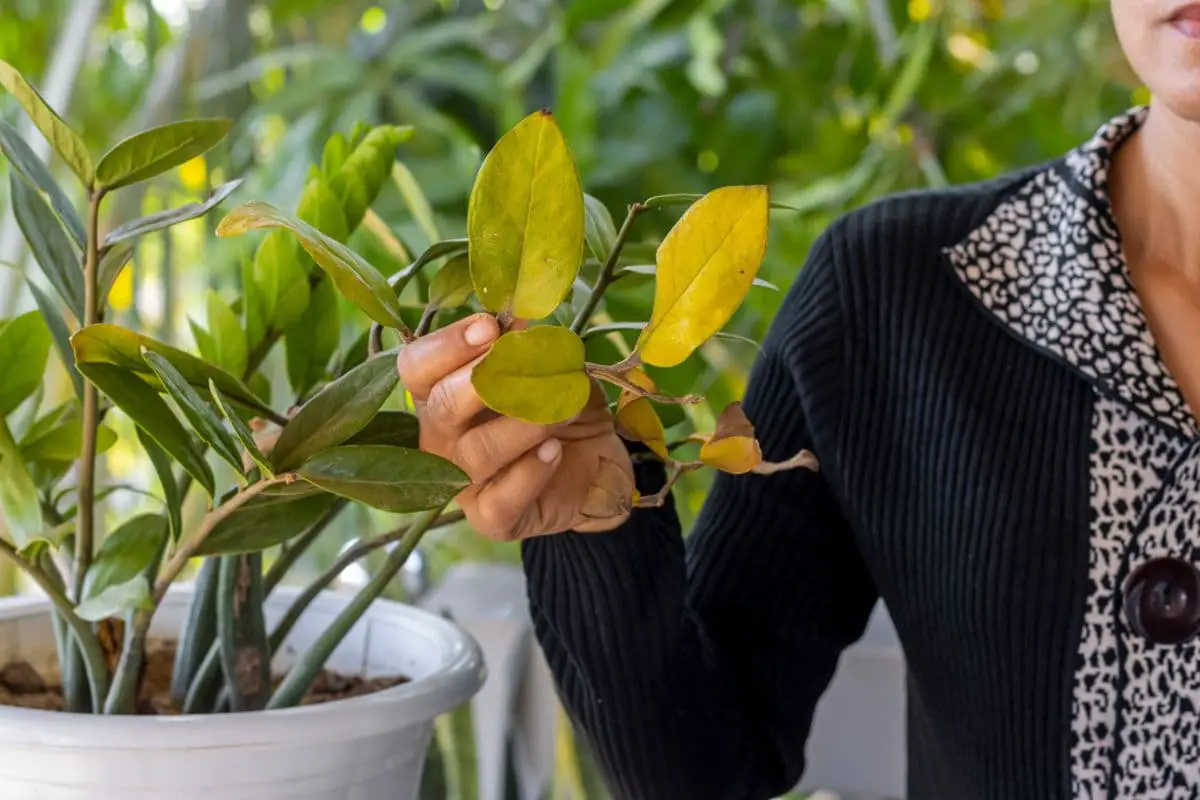Potting soil dries out more quickly than garden soil, that’s why houseplants need more regular watering. Constantly underwatered potting soil will eventually become hydrophobic and become unsuitable for plant life.
The soil becomes hydrophobic when there’s not enough water to keep waxy compounds from wrapping around soil particles. It will repel water and pull away from the pot, keeping your houseplant dehydrated. You can fix hydrophobic soil by soaking it in water or using wetting agents.
The rest of the article will discuss everything you need to know about hydrophobic soil. I’ll also share practical tips on how to fix and prevent this issue in your indoor garden.

Hydrophobic Soil: An Overview
Hydrophobicity is the ability of an object to repel water.
In gardening, this condition can result in poor water infiltration through the soil, depriving plant roots of moisture. It can also inhibit microbial activities and reduce the soil’s overall suitability to support plant life.
In nature, there’s a higher risk for soil to become hydrophobic in the following conditions:
- Small surface area in soil particles (i.e., sand or coarse materials)
- Burning plant matter over the soil generates high temperatures, releasing gas that later solidifies into waxy substances that coat soil particles
- Long periods of intense temperatures (over 90 °F or 32 °C)
- Abundance of plant litter rich in aromatic oils, resin, or waxy leaves
- Lack of microbial activities that break down waxy compounds into non-hydrophobic forms
Hydrophobicity can also occur in potting soil over time or due to inadequate plant care.
Here’s a simple explanation of how it occurs:
- Loamy soil contains decaying plant matter and microbes. As the microbes break down the plant matter in its initial phase, they release fatty acids and other waxy compounds, which build up in the soil over time.
- Regular watering from the top may flush out the waxy compounds. However, the hydrophobic nature of these compounds will resist the pressure from the water, allowing most of them to remain in the soil.
- Dry periods between watering will result in the lack of microbial populations in potting soil, which can slow down decomposition.
- This increases the chances of the waxy compounds wrapping around soil particles, gradually making the potting mix hydrophobic.
- When this happens, the water just passes through the soil without binding with the soil particles. Plant roots will then be unable to absorb enough moisture before it drains beyond their reach.
Common Causes
In your home setting, a few factors can cause the potting soil to become hydrophobic:
Over-Drying and Prolonged Drought
Houseplants need a bit of dry soil between watering to prevent root rot. However, even cacti and succulents don’t like the soil to be bone-dry. Moreover, potting mix materials like peat moss and bags of potting soil don’t readily rehydrate when allowed to become completely dry.
Soil Composition and Lack of Organic Material
Coarse and loose materials like sand have a lower surface area, making it easier for waxy compounds to bind into and wrap around.
Potting mixes hardly contain clay and sterile ones lack microbial life. They have lower water retention and lack microbial activities, resulting in a faster buildup of hydrophobic compounds.
Undisturbed Soil and Leaf Residues in Pots
It’s rare for home gardeners to disturb the soil during the 1-3 years between repotting sessions. I also know a few gardeners who leave a few plant residues (not sick but dried leaves) over the potting soil as mulch.
However, studies show that undisturbed soil can become hydrophobic because the decomposition rate is slower. The waxy compounds can build up in the soil and make it water-repellent.
Effects of Certain Chemicals
Pesticides can help you repel pests, fungal spores, and weeds. However, they can also build up in the soil, forming hydrophobic layers to prevent water from reaching a plant’s roots.
Generally, pesticide chemicals that are highly absorbable (meaning they have a high Koc value) tend to generate the most noticeable hydrophobic effects.
Here are some examples of chemical treatments sometimes recommended for indoor plants but can make the soil hydrophobic:
- Benomyl, a substance found in some fungicides, is one of the most notorious pesticides that can produce water-repellent soils.
- Malathion (a common insecticide) can also transform well-draining dirt into a hydrophobic substance when used as a soil drench. (Warning: It’s legally required to bring your houseplant outdoors (in a shaded area) before using this chemical as treatment.)
Impact of Potting Techniques and Container Materials
Heavy use of loose soil and breathable pots without adequate moisture-retaining materials can dry out the potting mix very quickly. Sticking to watering schedules too strictly in this case may increase the risk of the soil becoming hydrophobic.
Identifying Hydrophobic Soil in Your Plants
There are plenty of tell-tale signs that your soil has become hydrophobic. Recognizing these signs early on will help you fix the issue without having to repot your plant.
Visual Signs
A simple visual inspection will hint that your soil has become water-repellent.
Here are some signs to look out for:
- Water running off the soil surface. Water droplets may bead over hydrophobic soil. In large amounts, the water may pool over the surface.
- Gaps between soil and pot. Dry soil will lose its fluffy texture and the waxy compounds will pull particles together, forming clumps of soil impenetrable to water. The soil will pull away from the sides of the pot, and the water will slide through the gaps.
- Cracks on the soil surface. Similarly, the hydrophobic clumps of soil will create cracks between them. These serve as a passageway for water to exit through the drainage holes without hydrating the roots.

Physical Tests
To confirm hydrophobicity, you can perform these simple tests at home:
Water Absorption Test
Place deionized or distilled water in a 5 ml medicine dropper and release a few drops of water from a height of half an inch (1.3 cm).
If the water droplets bead on the surface and sit there for more than a minute, it means your soil has become hydrophobic. If it sits longer than four minutes, your soil is severely water-repellent.
Checking for Soil Compaction
To check for soil compaction, pour a cup of water over the soil surface and see if it penetrates the soil readily. If it pools over or slides through cracks or gaps, it means the soil has become compacted.
Container Feels Lightweight
If the soil has good moisture retention, the pot should feel significantly heavier after watering. However, if the pot remains the same weight after deep watering, it means the soil repels water.
Symptoms in Plants
Houseplants will show signs of dehydration if the soil has become hydrophobic.
- Wilting or drooping leaves
- Weak, brittle branches
- Stunted growth
- Yellowing leaf tips
- Leaf tips turning brown and crisp
- Wrinkling leaves or stems (succulents or cacti)
You can examine your watering routine and correlate it with the signs above.
If you frequently miss watering your plant for weeks, and the plant doesn’t bounce back after a thorough watering, it’s likely because the soil has become moderately or severely hydrophobic.
Consequences of Neglecting Hydrophobic Soil
Leaving hydrophobic soil untreated or leaving your plant in severely water-repellent soil can affect your plant negatively in the following ways:
- The plant will be constantly dehydrated even if you water it regularly. The roots are covered with hydrophobic soil and the water escapes through the drainage holes before the roots have a chance to absorb it. Once the plant consumes all the moisture stored in the stem, roots, or leaves, it will die.
- Underwatering can lead to plant stress, making them more susceptible to damage caused by pests and sunburn.
- Severely hydrophobic potting soil can be impractical to fix and reuse if you only have a few houseplants. Wetting agents can be pricey, but they’re a good investment if you have a larger houseplant collection or garden that you frequently underwater.
Treatment and Restoration
You can fix hydrophobic soil without having to repot your plant if the hydrophobicity is moderate. However, in severe cases, it’ll be more practical and safer for your plant to repot it in fresh soil with better moisture retention.
Here are the options for treatment and soil restoration:
Rehydrating Techniques
Depending on the severity of the soil’s hydrophobicity, you can employ the following steps to rehydrate it:
Bottom Watering
Bottom watering is a recommended watering practice for houseplants to rehydrate the soil evenly directly at the root zone.
The process is simple:
- Place the pot in a shallow container with water. The water level should be below the rim of the pot.
- The soil will then absorb the water through the drainage holes until it’s evenly saturated within about 10-30 minutes.
- Once the surface feels moist, remove the pot from the water.
- Leave the pot on a drip tray to remove the excess moisture.
Although generally positive, bottom watering can bring fertilizer salts and hydrophobic compounds to the soil surface. That’s why it’s important to water your houseplant from the top after bottom watering for 4-5 times to flush out salts and keep the surface wettable.
Soaking or Dunking Method
If it’s been more than 30 minutes, but the soil surface is still dry and there’s no change in the water level in the container, you need a different method.
Submerge the pot in a bucket of water. The pot will likely float, so you need to force it down. When you hear the bubbling noise, it means the water is pushing air out and filling the soil pores.
The bubbling will eventually stop and the pot will settle by itself. You can then bottom water the plant in a shallow container for up to an hour. Check regularly if the soil surface is moist to keep the plant from sitting in water longer than necessary.
This usually does the trick for moderately hydrophobic soil. You can confirm if the soil is evenly rehydrated by carefully poking a wooden toothpick or chopstick in a few spots.
Wetting Agents
If the above steps don’t work, you will need wetting agents or surfactants to fix severely hydrophobic soil.
These materials can vary in functions:
- Some wetting agents have hydrophobic and hydrophilic ends. The hydrophobic end binds to the soil particles coated with waxy compounds. The exposed hydrophilic (water-loving) end will then allow water infiltration.
- Others (like Matador) break down the waxy compounds, making the soil particles readily wettable. This type of wetting agent is the better option.
To use a wetting agent, simply mix it with a bucket of water before dunking the pot in. The concentration of the solution can vary depending on the product, so be sure to read and follow the product-specific instructions carefully.
The soaking time will be significantly shorter than dunking in pure water. This is because the wetting agent will reduce the surface tension and improve the interaction between the water and soil particles.
Soil Amendment or Mulching
Once treated, you can amend or mulch your potting soil with moisture-retaining materials like compost to prevent it from drying out too quickly. Of course, you wouldn’t want to use too much on drought-tolerant plants.
Wait until the upper 1-2 inches (2.5-5 cm) of the soil is almost dry before adding amendments. Scratch the surface with a small hand rake to loosen it, break apart hydrophobic compounds, and relieve surface compaction.
You can then add an inch (2.5 cm) of finished compost over the soil surface. It is fluffy and rich in organic matter, providing your potting mix with a balance of moisture retention, drainage, and microbial life.
Repotting
Another alternative is to repot your plant entirely. This will give you better control over the quality of the new soil and ensure your plant recovers.
Follow these steps when repotting:
- Dry roots tend to stick to the pot walls so you must water the plant 1-2 days before repotting. It will not absorb as much moisture but it can help make the roots a bit easier to work with. Be careful not to further damage the roots by carefully scraping the pot walls with a spatula or a flat knife to loosen them.
- Soak the hydrophobic soil and rootball in clean water as you remove the clumpy old potting mix from the roots.
- Prune the severely dried-out roots using sterile shears. Healthy roots are usually plump and white or light brown. Remove those that look crisp and brittle. Limit pruning to a third of the root system.
- Prune damaged foliage. You must also remove dried, discolored leaves. You can remove the same amount of leaves as the roots for an even root-to-shoot ratio. This will make it easier for your plant to recover.
I recommend using a fresh potting mix for your plant. The priority is to ensure your plant has a new environment that’s more suitable for its growth and health. You can rehydrate the old potting mix for use on other plants later.
Here are some tips to keep in mind when preparing a new potting mix:
- Avoid using peat moss if you frequently underwater your plant. Peat moss can become hydrophobic when allowed to dry out completely and is challenging to re-wet. In addition, the process of collecting peat moss is bad for the environment.
- Use coco coir or coco peat if you need moisture-retaining materials. They’re breathable and don’t easily become hydrophobic when dried out. They’re also easier to rehydrate.
- Use compost if you want supplementary nutrients. Compost has several functions in a potting mix. It holds moisture, improves aeration and drainage, and provides a gentle amount of organic matter, nutrients, and microbial life.
- Choose a pot that’s only 1-2 inches (2.5-5 cm) wider than the rootball. You wouldn’t want an oversized pot that will make your recovering houseplant more susceptible to overwatering risks very soon after repotting.
- Use a breathable pot with drainage holes. Root rot is a more severe problem than hydrophobic soil, so it’s important to keep the soil from staying wet and soggy.

Preventative Measures
It’s possible to fix hydrophobic soil, but the process can be tedious. Therefore, it’s best to prevent it from occurring in the first place. The key is to avoid frequently underwatering your houseplant.
Here are some tips:
- Understand your plant’s water and soil requirements. Moisture-loving plants need more moisture-retaining materials in their potting mix and more frequent watering. Conversely, drought-tolerant plants prefer loose soil and less frequent watering.
- Create a calendar or plant journal to remind you when to water your plant. Set it 2-3 days earlier than the recommended watering schedule. For instance, if your plant wants weekly watering, a reminder on the fifth day will help you check the soil before it dries out completely.
- Adjust your watering schedule based on the season. Hot and dry seasons will dry out the potting mix more quickly. Similarly, plants consume more moisture during their active growing season. You may need to check your houseplants and water the soil more often.
- Inspect your plant and the soil weekly or every time you water. This will help you catch early signs of hydrophobicity, such as caking or cracks in the soil. Lightly scratch the soil surface with a hand rake to relieve compaction or break up waxy compounds.
Final Thoughts
Hydrophobic soil can prevent your houseplant from absorbing water. Even if you water your plant regularly, the moisture is lost through the cracks between the water-repellent clumps of soil or the gap between the soil and the pot.
You can rehydrate the soil by bottom watering, soaking, or using a wetting agent. Make sure to water your plant regularly to prevent the issue from happening again.
When repotting, choose materials that retain moisture while still allowing for drainage, such as coco coir and compost. If your potting mix has peat moss, make sure it doesn’t dry out entirely to prevent hydrophobicity.
If you have questions or suggestions that can help our fellows in the gardening community, please leave a comment.

